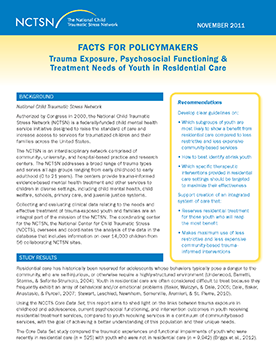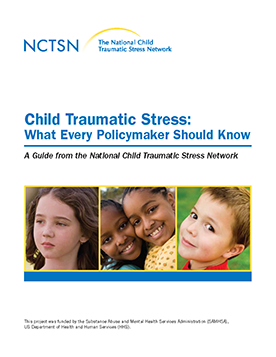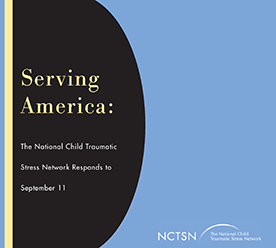
Core Data Set Policy Brief: Trauma Exposure, Psychosocial Functioning and Treatment Needs of...
Describes child and adolescent trauma exposure and psychosocial functioning among NCTSN care recipients in residential care.
The National Child Traumatic Stress Network (NCTSN) was created by Congress in 2000 as part of the Children’s Health Act to raise the standard of care and increase access to services for children and families who experience or witness traumatic events. This unique network of frontline providers, family members, researchers, and national partners is committed to changing the course of children’s lives by improving their care and moving scientific gains quickly into practice across the US. The NCTSN is administered by the Substance Abuse and Mental Health Services Administration (SAMHSA) and coordinated by the UCLA-Duke University National Center for Child Traumatic Stress (NCCTS).
Collaborative work with Policy Makers has been an essential part of the mission and activities of the NCTSN since the beginning. This website provides a range of resources for policy makers and other stakeholders who are seeking to better understand the prevalence and consequences of child traumatic stress, as well as solutions and policy implications. In addition to the NCTSN resources highlighted below, Policy Makers can learn more about the NCTSN in the About Us section of this website and particularly the Policy Issues page.

Describes child and adolescent trauma exposure and psychosocial functioning among NCTSN care recipients in residential care.

Describes the need for an integrated system of care for youth with traumatic stress and substance use disorders.

Educates policymakers about the scope and impact of childhood trauma, offers effective solutions that can be implemented with the support of trauma-informed public policy, and provides information about additional resources.

Summarizes the NCSTN's response to the September 11th attacks and includes an introduction to the NCTSN and NCTSN 9/11-related activities.

Informs policymakers and the public about the costs of child trauma, child maltreatment, and adversity.